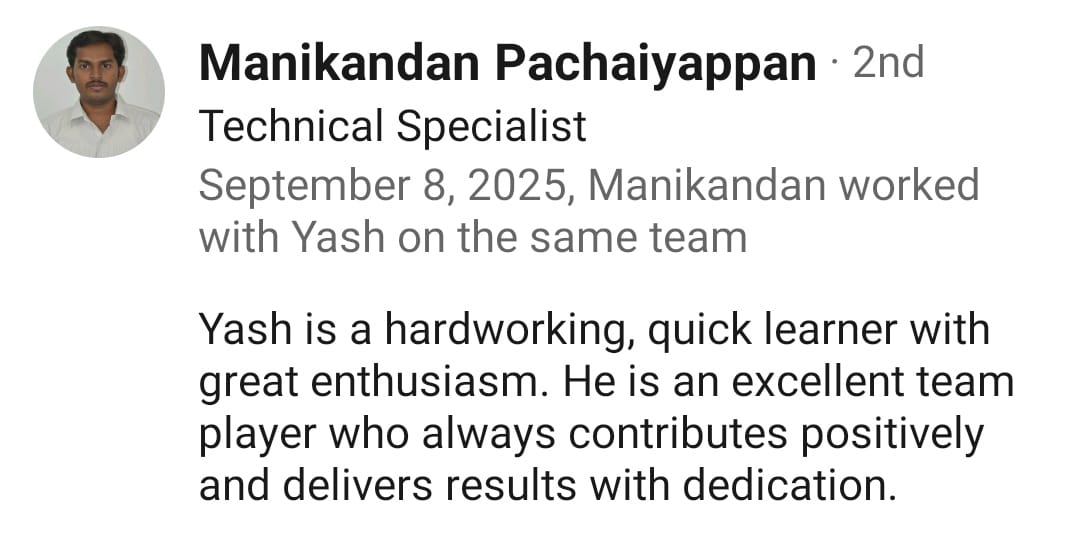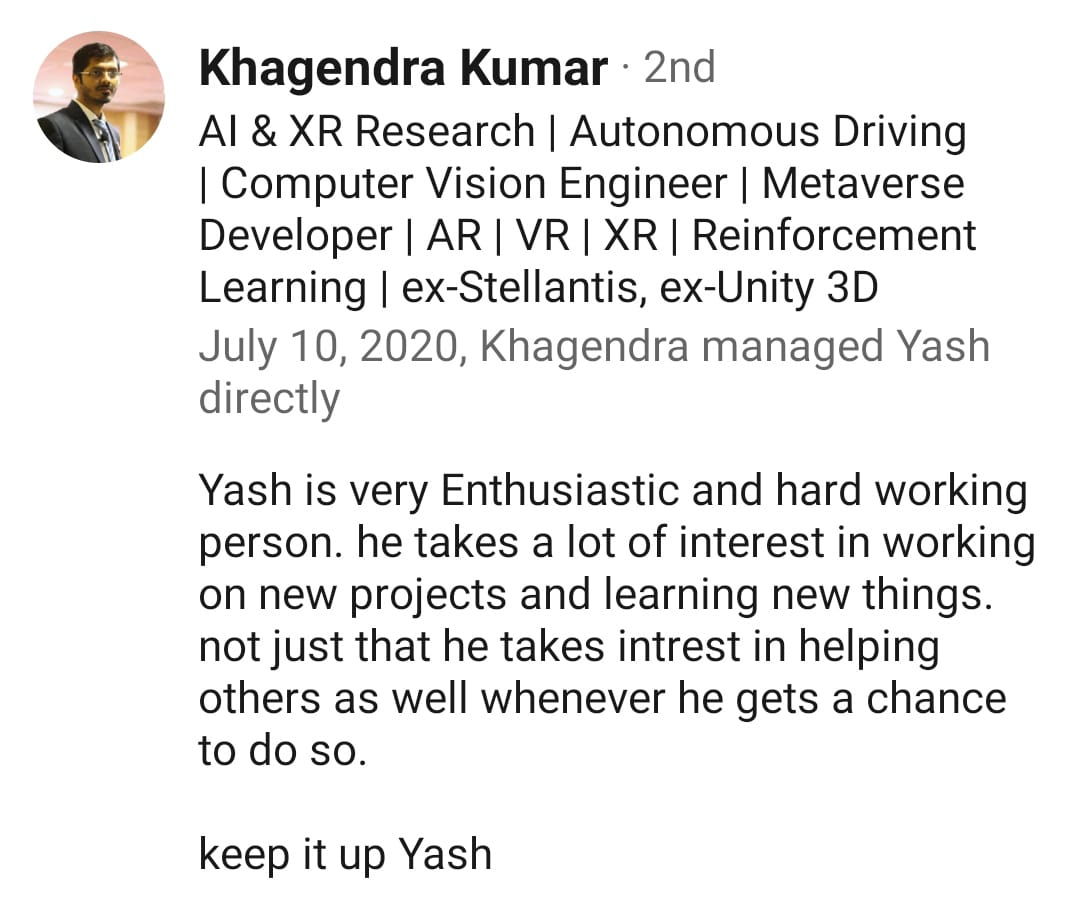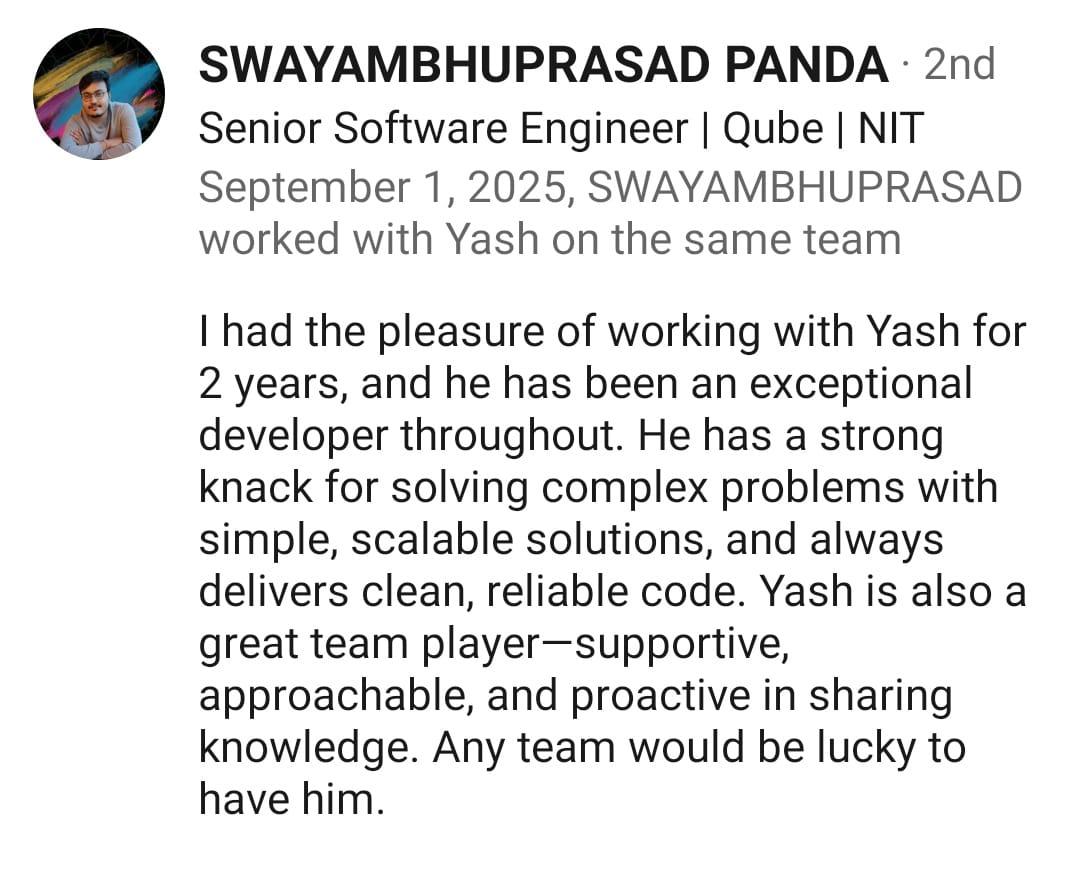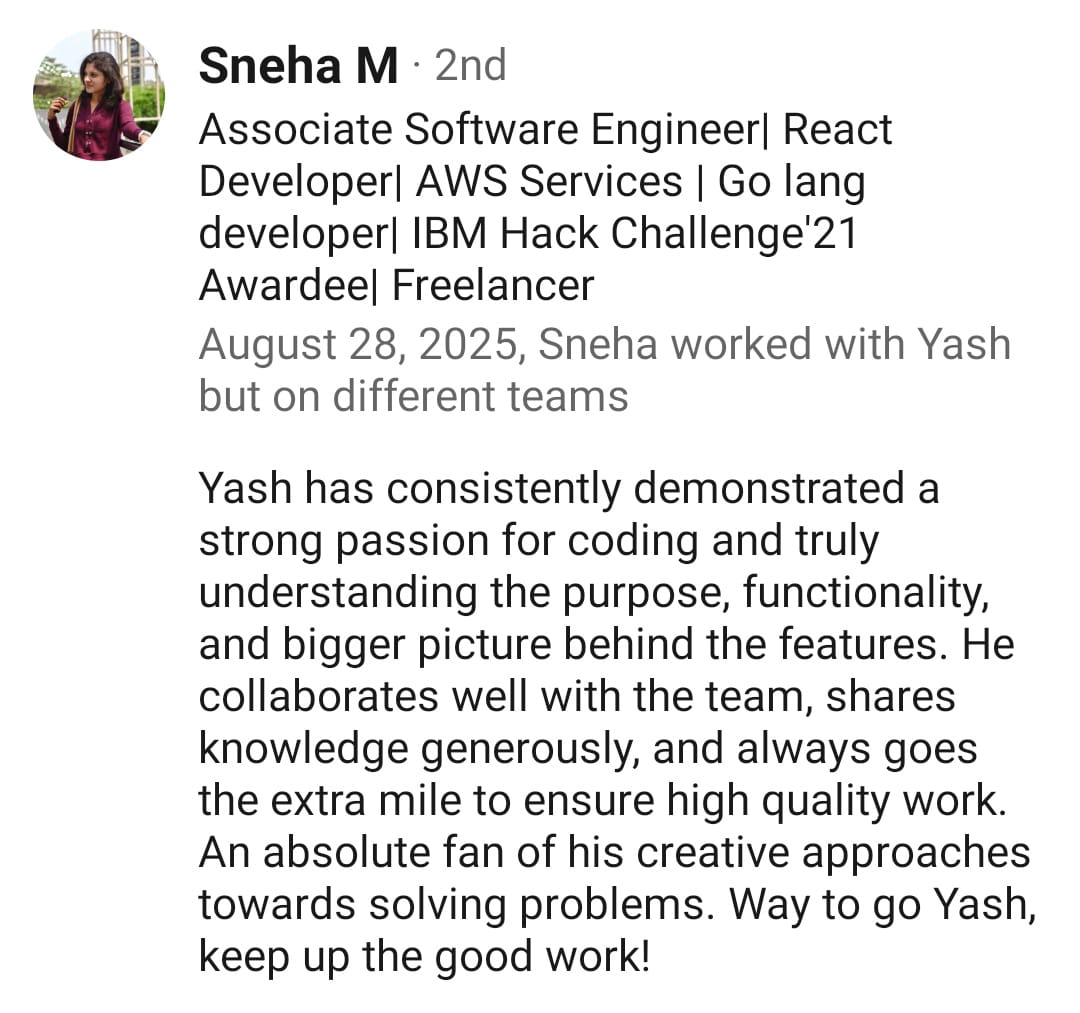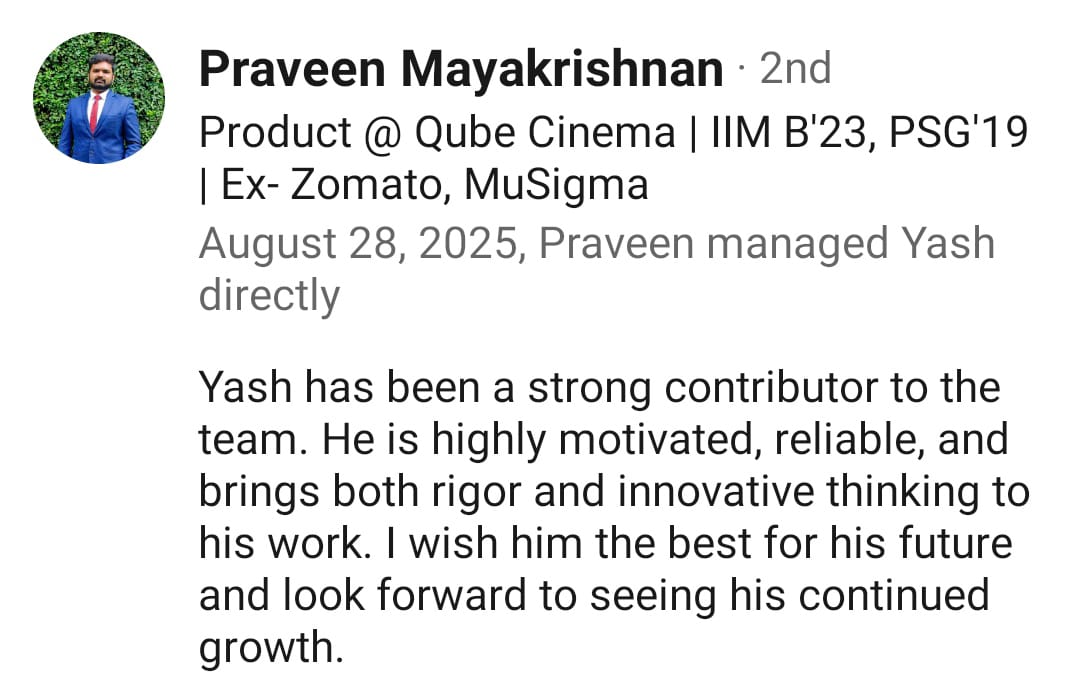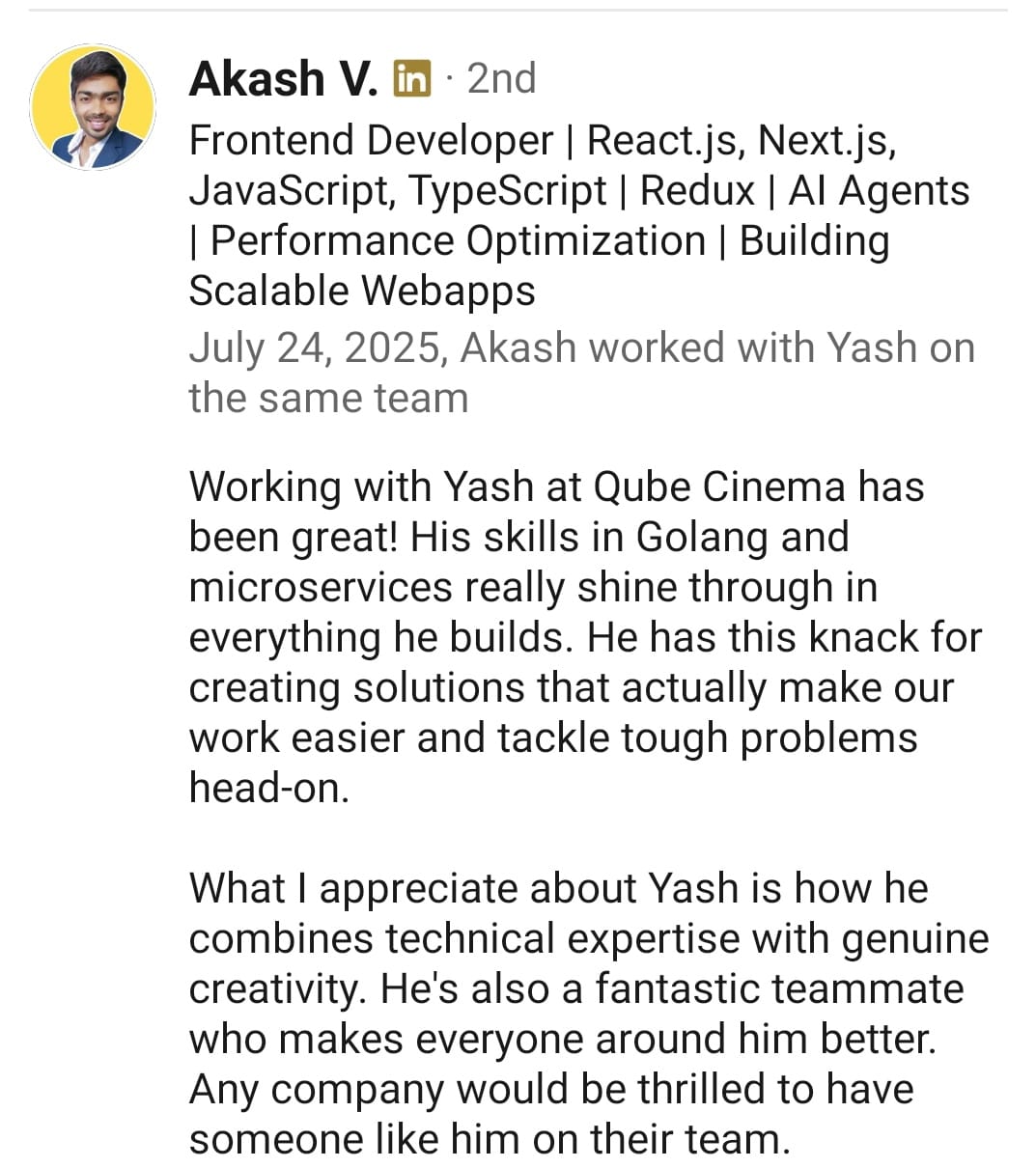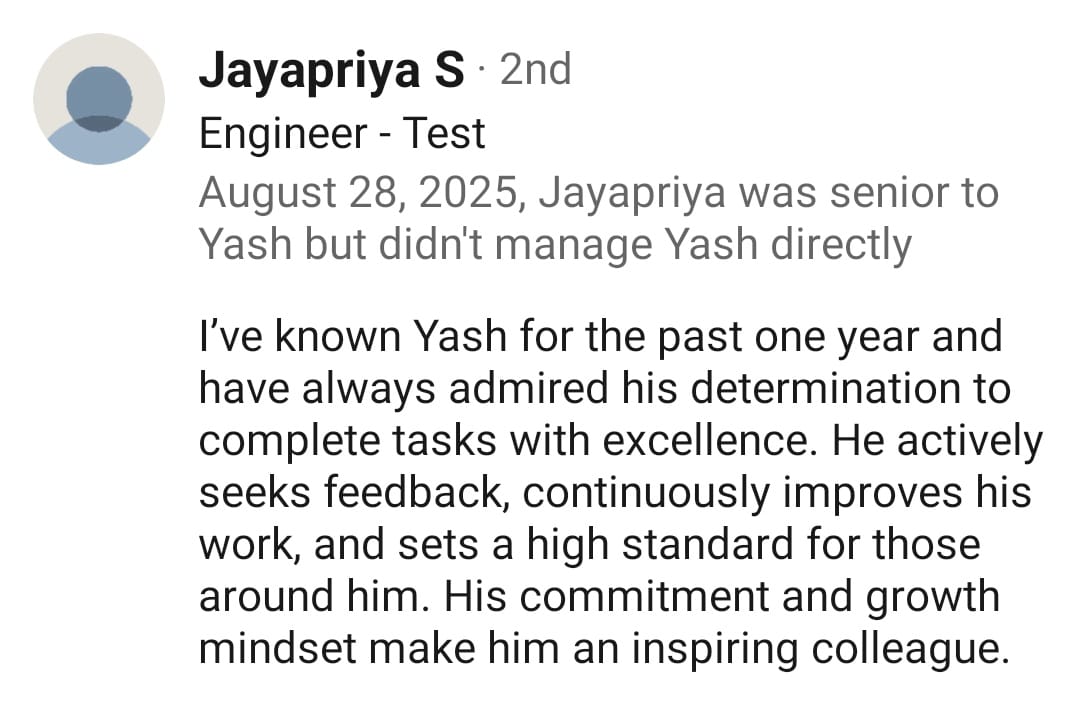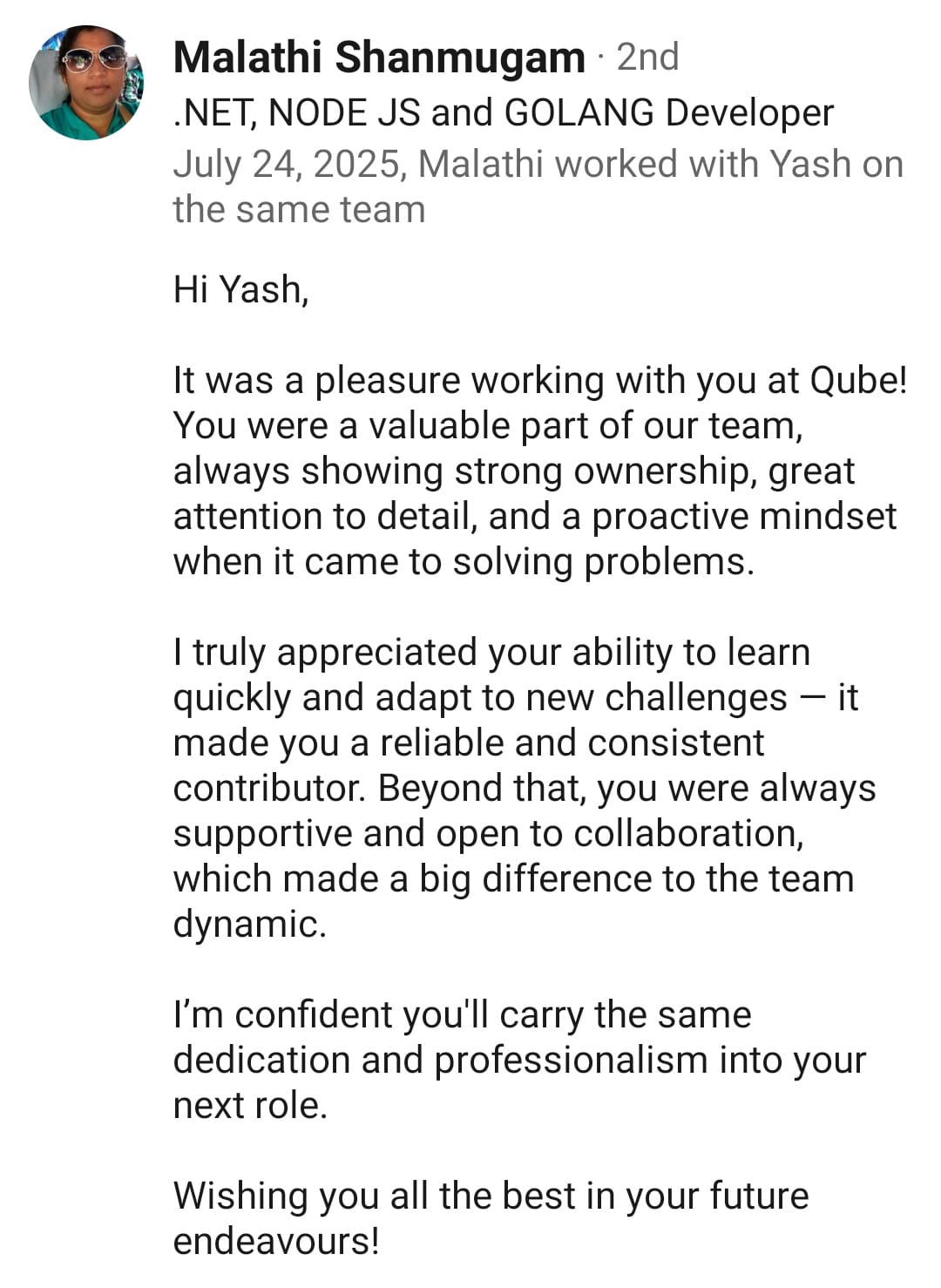About
I began my career in 2022 with a language I had never heard of before Golang. This was the turning point when I truly started delving into programming, focusing on core concepts and design principles. I'm generally interested in technology, SaaS, psychology, and learning to make the perfect pancakes. I like to explore new technologies and keep building cool projects. Generally, I work on small projects, and most of the time, you'll find me working solo. My favorite tech stack is Next.js, MongoDb and Golang. I also enjoy traveling and cooking food. In the past, I pursued a degree in computer science and engineering, interned at tech companies in Bangalore, India, and competed in over 27+ hackathons for fun.
Work Experience
Skills
Databases
Serverless
Cloud
I like building things
I've worked on a variety of projects, from simple websites to complex web applications. Here are a few of my favorites.

FynCut - Turn Podcasts Into Viral Clips Automatically using AI
FynCut is an innovative platform that leverages AI to transform long-form podcasts into engaging short clips, making it easier for creators to share their content on social media and reach a wider audience. With FynCut, podcasters can effortlessly generate captivating snippets that highlight the most interesting and shareable moments from their episodes, helping them grow their listener base and increase engagement across various platforms.
MoniGo <> Performance Monitoring for Go Applications | OSS
MoniGo is a performance monitoring library for Go apps, offering real-time insights into service-level and function-level metrics. With an intuitive UI, it enables developers to track and optimize performance. Get your Go app's dashboard up in just 10 seconds!
gocron-ui <> A Web UI for gocron | OSS
gocron-ui a lightweight, real-time web interface for monitoring and controlling gocron scheduled jobs. It provides a complete solution for visualizing job schedules, tracking execution status, and managing jobs through an intuitive web dashboard.

PingPlane - SaaS Uptime Tracker for Indie Hackers and Developers (On Hold)
PingPlane is a comprehensive micro-SaaS platform specifically designed for indie hackers, developers, and small teams who need professional-grade system monitoring and status communication tools. The platform combines real-time uptime monitoring, beautiful public status pages, and embeddable widgets into a cohesive solution that helps businesses maintain transparency with their users while tracking their application performance.

Free Subtitles AI Generator | OSS
A powerful web application that generates subtitles for videos using AI. Visit the live demo at free-subtitle-ai.yashchauhan.dev. Captune AI leverages open ai whisper model to accurately transcribe spoken words into text, making it easier for users to create subtitles for their videos. Captune AI is designed to meet diverse user needs. All processing is done on the client side, so you can rest assured that your data is secure.

Emitzy - A Simple Invoice Generator
Emitzy is your all-in-one invoicing and contract management tool. Create, update, send, and track invoices effortlessly. With auto reminders, analytics, monthly reports, and unlimited access. Say goodbye to invoicing headaches!
Research Work
Here are some of my research projects and publications.
- C
Cardiovascular disease prediction using classification algorithms of machine learning
Yash Chauhan
Cardiovascular disease is a major health burden worldwide in the 21st century. Human services consumptions are overpowering national and corporate spending plans because of asymptomatic infections including cardiovascular ailments. Consequently, there is an urgent requirement for early location and treatment of such ailments. The information which is gathered by data analysis of hospitals is utilizing by applying different blends of calculations and algorithms for the early-stage prediction of Cardiovascular ailments. Machine Learning is one of the slanting innovations utilized in numerous circles far and wide including the medicinal services application for predicting illnesses. In this research, we compared the accuracy of machine learning algorithms that could be used for predictive analysis of heart diseases and predicting the overall risks. The proposed experiment is based on a combination of standard machine learning algorithms such as Logistic Regression, Random Forest, K-Nearest Neighbors (KNN), support vector machine (SVM) and Decision Tree. Most of the entities in this world are related in one way or another, at times finding a relationship between entities can help you make valuable decisions. Likewise, I will attempt to utilize this information as a model that predicts the patient whether they are having a Cardiovascular disease or on the other hand not. Moreover, the data analysis is carried out in Python using Jupyter Lab in order to validate the accuracy of all the Algorithm. - D
Different sorting algorithms comparison based upon the time complexity
Yash Chauhan, Anuj Duggal
Sorting is a huge demand research area in computer science and one of the most basic research fields in computer science. The sorting algorithms problem has attracted a great deal of study in computer science. The main aim of using sorting algorithms is to make the record easier to search, insert, and delete. We’re analysing a total of five sorting algorithms: bubble sort, selecting sort, insertion sort, merge sort and quick sort, the time and space complexity were summarized. Moreover from the aspects of the input sequence, some results were obtained based on the experiments. So we analysed that when the size of data is small, insertion sort or selection sort performs well and when the sequence is in the ordered form, insertion sort or bubble sort performs well. In this paper, we present a general result of the analysis of sorting algorithms and their properties. In this paper a comparison is made for different sorting algorithms.
Get in Touch
Want to chat? Just shoot me a dm with a direct question on twitter and I'll respond whenever I can. I will ignore all soliciting.


